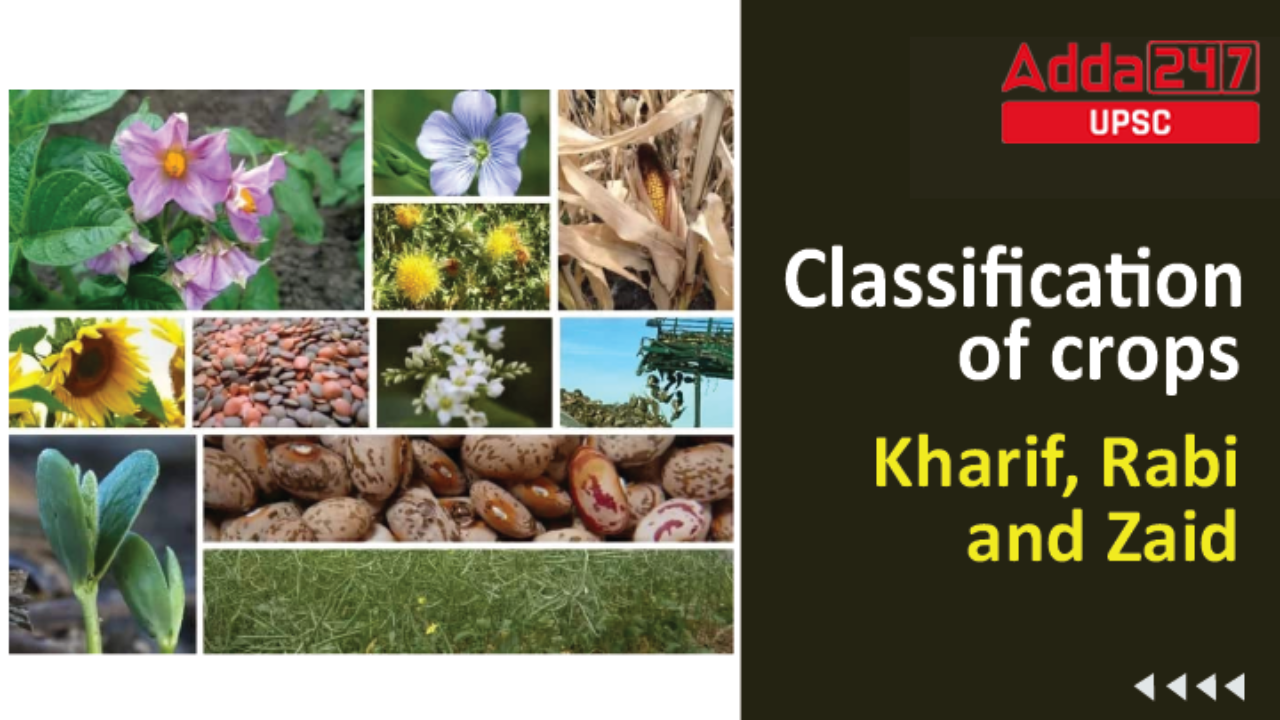Table of Contents
Cropping pattern in India
Crops are classified on various parameters like based on ontogeny; based on root depth; based on climatic conditions; based on season; and based on carbon dioxide absorption.
In this article, we will discuss the cross-classification based on seasons in a comprehensive manner as most of the questions in UPSC come from this classification. In our next article, we will discuss crop classification based on other parameters.
Crop classification based on seasons
- India is a peninsular country where climate is mostly driven by monsoon. Due to this reason, India is endowed with a variety of seasons. These seasons, in turn, provide different weather conditions to crops, which eventually lead to different cropping pattern in India.
- Based on seasons, crops are classified into the following:
- Kharif crops
- Rabi crops
- Zaid crops
Difference between kharif rabi and zaid crops
Now, we will discuss Kharif rabi and Zaid season in detail.
Kharif crops in India
- Kharif crops, also known as monsoon crops, or autumn crops are cultivated and harvested in the monsoon season.
- Kharif crops are sown at the beginning of a monsoon season and farmers harvest them at the end of the season.
- One of the important features of kharif crops is that they need a lot of water and hot weather for proper growth.
- Kharif crops examples: Rice, Cotton, Maize etc.
Rabi crops in India
- In Arabic, Rabi means spring. Crops grown in the winter season and harvested in the spring season are called the Rabi crops.
- They can be distinguished from other crops as these crops require a warm climate for germination and maturation of seeds and need a cold environment for their growth.
- They do not require much water and this is why rain in winter, spoil rabi crops while it is good for the kharif crops.
- Rabi crops examples: Wheat, Gram, Barley etc.
Zaid crops in India
- Zaid or summer crops are grown in the short season between Kharif and Rabi crops, between March and July.
- These crops are mostly grown on irrigated lands and therefore, the farmers do not wait for the monsoon.
- Zaid crops require warm soil and high temperatures (cooling at night) to grow.
- Most of the vegetables and hybrid cereals are grown in zaid seasons.
- Zaid crops examples: Rice, pumpkin, pulses, etc.
- Know more about Zaid crops from here.
List of Rabi Kharif and Zaid crops
| Sl. No. | Type of crop | kharif rabi and zaid crops months– Sowing | kharif rabi and zaid crops months– Harvesting | Crops |
| 1. | Kharif | June-July | September-October | rice, sorghum, maize, tea, rubber, coffee, guar, Sesame, cereals such as Arhar Dhal, pearl millet, soybeans, cotton, oilseeds, |
| 2. | Rabi | October-November | January-February | wheat, oats, barley, pulses, cereals, oilseeds, linseed, etc. |
| 3. | Zaid | February-March | May-June | Cucumber, Pumpkin, Bitter gourd, Watermelon, Muskmelon, Sugarcane, Groundnut, Pulses, |



 TSPSC Group 1 Question Paper 2024, Downl...
TSPSC Group 1 Question Paper 2024, Downl...
 TSPSC Group 1 Answer key 2024 Out, Downl...
TSPSC Group 1 Answer key 2024 Out, Downl...
 UPSC Prelims 2024 Question Paper, Downlo...
UPSC Prelims 2024 Question Paper, Downlo...





